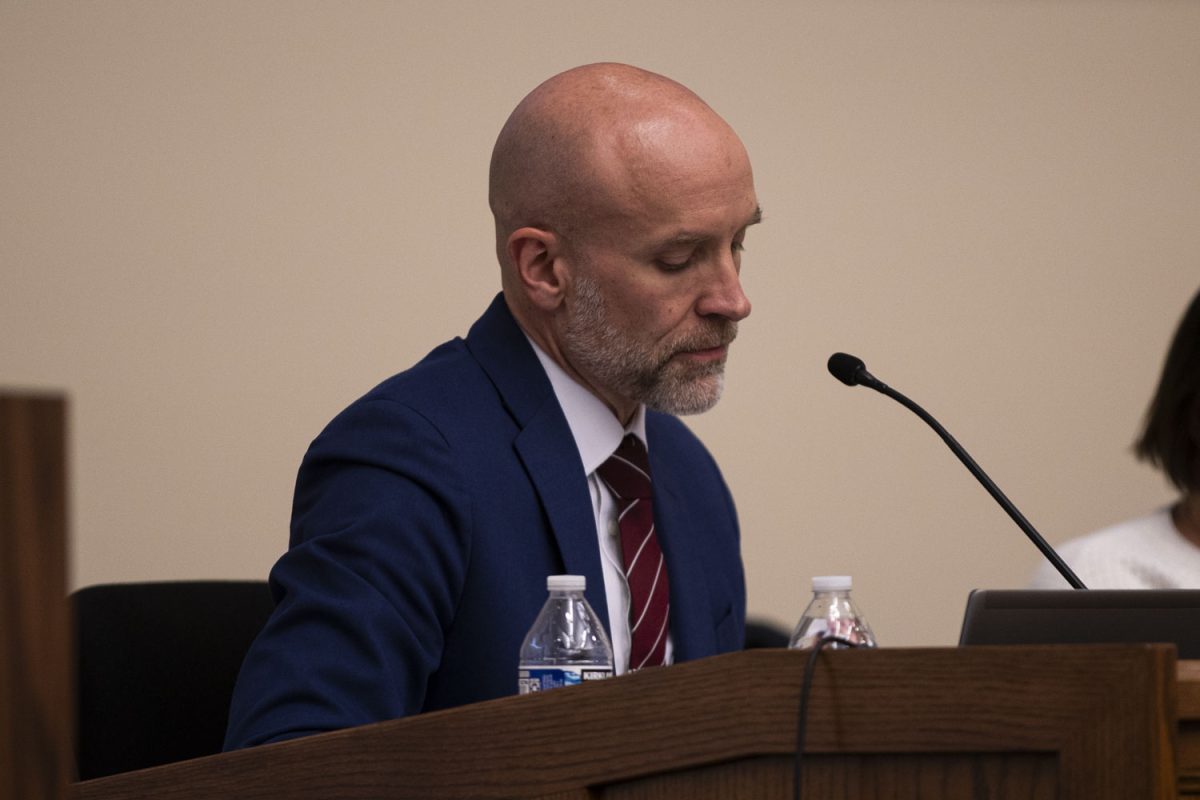It’s the future of surgery.
A surgeon sits at a commanding hub, watches a monitor, and pinches his fingers together to manipulate small mechanical claws to delicately operate on human tissue and organs. When he or she is finished, the patient is left only with small incisions in the abdomen, making for a much easier recovery.
Surgeons at the University of Iowa Hospitals and Clinics have been operating this way since 2002, but until recently, future doctors didn’t have the opportunity to learn and practice this method outside the operating room.
On Wednesday, UI officials dedicated a third da Vinci surgical system for the sole use of training medical students and residents. They can practice precise movements by picking up rubberbands and small beads at first, next moving on to cadavers, and finally operating on live patients.
"This is unique because it is the first dedicated teaching facility," said Javier Campos, the executive medical director of operating rooms at the UIHC.
While other hospitals use the da Vinci systems, the UIHC is the only hospital in the state to use one exclusively for training purposes.
By training residents, fellows, and surgeons on the new system, Campos said, officials hope to promote ease of surgery among doctors when they use the high-tech tools in the operating room.
"Residents will come and observe the leading surgeon who is doing the robotic surgery here," said Campos, gesturing to the spider-like robot hunkered over a mannequin. "And after they go through the learning process, the surgeon will then let the residents sit here and perform basically the same surgery and practice."
Because the da Vinci hub is several feet away from the patient during surgery, a doctor stands by the patient to assist should something go wrong.
The da Vinci system normally costs approximately $1.4 million to $1.7 million, but the UIHC was able to buy this one for less than $200,000 from a neighboring hospital that wasn’t using it — a bargain, said Campos.
"This is a facility in which trainees can learn techniques needed for operations," said UI spokesman Tom Moore. "So that will be a direct benefit to our patients, because they can perfect their techniques in an educational setting before operating on a patient."
This type of training is important for students who will likely be using technology as surgeons, said Lyndsay Harshman, a fourth-year medical student and the president of the Executive Council of Graduate and Professional Students.
"It gives us a chance to get into an [operating room] and experience and practice our surgical skills in a situation where we may not get as much actual experience," she said. "It’s a great opportunity to home our growing medical skills."
Mercy Hospital in Des Moines has a da Vinci system that has been in place since August 2007, and it has performed 631 surgeries in various departments, said Priscilla Collins, the gynecology, urology, and robotics manager at Mercy. Unlike the UIHC, it doesn’t have a system designated specifically for training.
"The surgeon really already knows the procedure, he just needs to learn the tools," Collins said.
David Bender, a UI assistant clinical professor of obstetrics/gynecology who uses the da Vinci system in operations such as hysterectomies, said he believes the training facility will not only increase operating knowledge but also build patient trust.
"I think that if patients know that they are coming to a training institution, and the residents and fellows are being asked to be responsible and learn some of these basic skills and techniques, it will only continue to enhance the trust patients have placed in us," Bender said.






